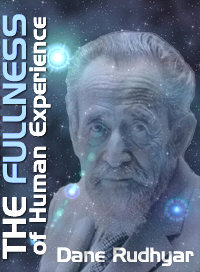 |
| Home | Bio | Art | Music | Literature | Civilization & Culture | Philosophy of Wholeness | Theosophy & Spirituality | Astrology |

CHAPTER EIGHT
Crises of Transition - 7 The path of discipleship In the process of individualization, there is an emphasis on whatever makes the would-be individual different from his or her family or peer-group, and especially from the masses that unquestioningly follow the patterns of their culture. The result is a state of at least relative isolation. Discipleship, in the broadest sense of the word, implies on the contrary a new state of relatedness. The disciple is related to his or her master or teacher, and in many if not most cases, to other disciples. Discipleship is a shared relationship; and this relationship may be to a common ideal or set of beliefs as much as to a superior personage, whose superiority may be one of physical or mental skill, or of state of being and consciousness. Discipleship implies not only relationship to a superior being who has accepted the relationship; it requires that the disciple either ceases to be busy stressing his "difference" as an individual while learning to respond to the vibrations of a higher state of being, or is able (and perhaps inwardly directed) to use that difference, as well as he or she can, in terms of the type of purpose characterizing this higher state. At the level of social, artistic or business productivity, this second alternative would result in team work consciously pursued in terms of a clearly understandable material purpose. But, at least during the earlier stages of the spiritual Path of discipleship, the basic concern is not what the group of disciples may be able to produce objectively, but rather the use of the tensions inherent in the interpersonal relations between the disciples, in order to intensify the process of transmutation of desires and the transformation of the mind. Not only the desire for personal achievement, fame, or wealth — and perhaps for special favors from the master — but even for a strictly individual existence, has to be transcended. It should be replaced by faith and a deep sense of potential, even if not yet actual participation in a planetary Communion of beings. The mind has to open itself to concepts and quasi-visual experiences which inevitably seem paradoxical and non-rational to the culture-built intellect of the disciple. At the level of the traditional guru-chela relationship in Asian and Near Eastern regions, the chela was expected not only unquestioningly to obey the guru in terms of behavior, but to condense and unify all the currents of his or her psychic energy (thus his or her entire emotional life) into a single stream of devotion (bhakti) to the guru. This unifying process can be related to what is expected in the practice of Kundalini Yoga, that is, the drawing of the life-energy away from the cells of the entire body, then the condensation and the rise of that energy along the central channel of the spinal column until it reaches the Ajna chakra behind the forehead. There the energy is said to unite with a descending current of transhuman power. The power of the Pleroma "descends" through the guru to transfigure the chela whose whole being has become an integrated musical instrument able to resonate to the super-cultural planetary rhythm of the Soul of the Earth-being. When, during the sixth century B.C., the consciousness of the vanguard of mankind became ready for the development of a new level of mental activity, Gautama the Buddha, Pythagoras, and other great personages attempted to give a public formulation to the new mind. As a result, it became possible for the process of transition from the cultural and individual state to the Pleroma condition of being to take a new form. Some early theosophists spoke of a "reorganization of the White Lodge" at the time of Gautama; and according to the German philosopher-occultist Rudolf Steiner, the impregnation of the matter of the earth by the blood of Jesus at the crucifixion made possible a basic change in the process of Initiation. Such statements may best be interpreted, I believe, as more or less symbolical indications that some twenty or twenty-five centuries ago a new level of operation of the human mind and of the psychism a culture generates was reached as a worldwide public possibility. A possibility only. The archetype of a new rite of passage having been released, a new elite of mentally mature human beings, ready to experience the transition between personhood and the Pleroma, could do so in terms of an individualized, mentally formed consciousness, rather than solely at the level of the control of biopsychic energies. As a result, karma can now be understood as a significant and symmetrical cyclic process instead of as the operation of a blind and meaningless force of Nature. Only a fully developed individual self is able to give a series of karmic developments the meaning of tests of liberation revealing the Compassion of the Godhead. This self alone may intuitively feel the great rhythm of the Movement of Wholeness, even through apparently disruptive and challenging events experienced along the Path. It has to be a self fully accepting the responsibility of the state of individuality and of the freedom it entails, rather than making a mysterious, essentially transcendent, and incomprehensible God the cause of suffering and tragedy. A successful transition to a state of being beyond the merely human requires more than a new type of mental process. What is needed is a repolarization of the experiencing subjective self. There must be a shift from an isolated and strictly individualistic state dominated by the principle of Multiplicity to the field of attraction of the principle of Unity. And this implies the transmutation of the person's basic desires. These changes are possible because new situations and new relationships arise, releasing an at least partially supernatural surge of potency. The whole being of the traveler on the Path is gradually (and alas often very painfully) experiencing a process of deconditioning, then reorganization. Because the principle of Multiplicity is still very powerful even in predominantly subjective states of being, each person who reaches the level of mentally aware and intuitive individual selfhood is confronted with the way best fitting his or her "difference." Yet the process has an invariant foundation which has to be accepted in every case. No basic step can be missed, for its avoidance would leave a karmic shadow that might later lead to a more crucial failure. To the religious spirit this means that God's Will must be accepted unconditionally; but on the Path of transformation, more than a passive acceptance is demanded of the individual traveler. As it has often been stated in inspirational semi-esoteric writing, he whoever treads on the Path eventually has to become the Path itself. There is no escape from what one is as an individual; only a victorious passage through. The defeat of a resurgent army of ghosts, vividly remembered as reawakened images of what one had been can alone lead to the Pleroma state; and the elation of success must always be tempered by the humility born of the realization that victory could always have been more complete. It is futile to reduce the Pleroma state of being and its combination of unanimity and individuality to patterns operative in our sociocultural, political, and business world. It is also futile to personify seemingly individual sources of radiant power and Compassion that ignore our commonplace sentimentality. Nevertheless, even a tentative knowledge of the nature of a basic process of metamorphosis may be valuable, because the quality of livingness of human persons attempting to tune up to the oneward Movement of Wholeness often depends on the conscious understanding of what is at stake. As individualized human persons we have a right to understand — a right to meaning. This indeed is the basic human right, rather than an ambiguous right to life, happiness, and other bland achievements. The spiritual life is a series of victories; the reward is always a more inclusive understanding of what one is meant to be — a deeper, fuller, richer experience of Wholeness. By permission of Leyla Rudhyar Hill Copyright © 1986 by Leyla Rudhyar Hill All Rights Reserved.  Web design and all data, text and graphics appearing on this site are protected by US and International Copyright and are not to be reproduced, distributed, circulated, offered for sale, or given away, in any form, by any means, electronic or conventional. See Notices for full copyright statement and conditions of use. Web design copyright © 2000-2004 by Michael R. Meyer. All Rights Reserved. |
 |
